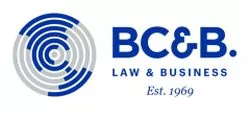In November 2016, a court ruling from the Circuit Collegiate Courts was published in Mexico. This court ruling is not binding but it is considered as an important reference for the interpretation of patent claims in litigation, especially for a concept similar to the long discussed doctrine of equivalents.
According to this court ruling, the Circuit Collegiate Court considered that the decision about infringement must rely on the opinion of an expert witness, who should apply his own expertise in the technical area of the case, and who must provide a broad interpretation of the claimed features of the invention based on functionally substitute elements.
It is important to recall that the doctrine of equivalents is not expressly contemplated by the Mexican Intellectual Property Law, and in fact, until this decision came up, it was generally accepted by Mexican IP Law practitioners that the legal framework required a literal approach to be taken in order to determine infringement.
According to Article 21 of the Mexican IP Law (MIPL), the right conferred by a granted patent is determined by the granted claims. In turn, according to Article 12, a claim describes the essential feature of an invention for which protection is precisely and specifically claimed.
Based on Articles 12 and 21 of the MIPL, it has been traditionally interpreted that only those features expressly recited in a claim are considered essential, so the absence of a feature in a claim should render it as non-essential. Under this generally accepted interpretation, if a product/process lacks at least one of the features of a claim, it cannot be considered to infringe the patent.
Article 21 of the MIPL also refers to the interpretation of the claims. It states that the description and drawings of a patent shall serve to give an interpretation to the granted claims. Thus, the nature of a patented feature, even under the literal approach, should be analyzed based on the wording of the granted claims, and in view of the description and drawings in order to determine the infringement, but it should not include equivalent means or elements that were not expressly included in the description.
However, the referred court ruling asserts that a "peripheral" interpretation method should confirm the existence of an infringement in view of the scope of the patent, based on its claims, either by identity or equivalence. The ruling states that the claims of a patent have a very important role to define the scope of a patent and that the object of the law is to provide a strong protection to industrial property, as well as to prevent actions that affect such exclusivity or that constitute unfair competition.
Moreover, the ruling mentions that in order to interpret the object of a patent within an administrative infringement procedure, the judge must perform an analysis in light of the opinion of an expert witness, whom in turn should interpret the technical language and extract the actual meaning of the patented invention according to the technical context of the granted claims, instead of focusing only in literal meaning of the used terms.
If the expert witness determines that a product/process includes all the elements recited in the granted claims, it will be understood that the claims are actually being infringed by identity. But even if the expert witness concludes that a product/process is not identical to the patented invention, it would be possible to perform a further analysis to determine whether such product/process has, or not, equivalent means to the ones patented.
The ruling goes even further. It establishes that this peripheral method of interpretation by the expert witness should also take into account his/her own personal knowledge and even innovations developed after the priority or filing date of the patent.
If the expert witness, based on his/her analysis and knowledge without involving an inventive step process, reaches the conclusion that the means or elements contained in the product/process are equivalent from the ones patented, and that such means or elements allow such a product/process to solve the same problem that the patented invention aims to solve, then there will be an infringement of the patent in question.
This ruling may represent a positive step for the Mexican patent system, but the real effect of this court ruling over the interpretation of claims during litigation remains to be seen.
The content of this article is intended to provide a general guide to the subject matter. Specialist advice should be sought about your specific circumstances.

